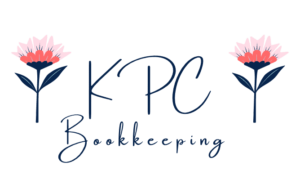Hey, trailblazing women entrepreneurs! Today, we’re diving into cash flow projections. First things first, what the heck does that mean?
Simply put, cash flow projections are estimates of how much cash your business expects to receive and spend over a specific period, typically a month, quarter, or year. By forecasting your cash flow, you can anticipate potential cash shortages or surpluses, identify trends and patterns, and make informed decisions to manage your finances more effectively. Doesn’t it sound nice to know ahead of time?
So first,
1. Gather Your Data
The first step in creating cash flow projections is to gather the necessary data to inform your forecasts. Start by compiling information on your historical cash flow, including sales revenue, operating expenses, loan payments, and other sources and uses of cash. If you’re already in an accounting software (provided you keep it updated and accurate), this should be a breeze. But you can still use your trusty spreadsheet, financial statements, and transaction records to gather the data.
2. Estimate Future Income
Once you have your historical data in hand, it’s time to estimate your future income. Consider factors such as sales projections, pricing changes, seasonal trends, and market conditions to forecast your expected cash inflows. Be realistic but also optimistic – aim to strike a balance between being conservative and ambitious in your revenue projections to account for uncertainties and opportunities. There’s a super easy forecasting formula you can use in Excel or Google Sheets that can help you predict the future once you have your historical data input.
3. Project Expenses
Next, it’s time to project your business expenses for the period covered by your cash flow projections. Consider all recurring and one-time expenses, including overhead costs, payroll, utilities, rent, inventory purchases, and any other expenditures relevant to your business operations. Factor in any anticipated changes or fluctuations in expenses based on your business plans and growth strategies.
4. Account for Timing
Timing is everything when it comes to cash flow projections. Take into account the timing of cash inflows and outflows, including payment terms for customers, billing cycles, payroll schedules, and vendor payment deadlines. By aligning your cash flow projections with the timing of your financial transactions, you’ll gain a more accurate picture of your business’s cash position and liquidity.
5. Monitor and Adjust
Creating cash flow projections isn’t a one-and-done task – it’s an ongoing process that requires regular monitoring and adjustment. Keep a close eye on your actual cash flow compared to your projected figures, and identify any variances or discrepancies. Use this feedback loop to refine your projections, update your assumptions, and make informed decisions to keep your business finances on track.
…
That doesn’t sound as hard as you thought, does it? To me, it’s fun, but as I’ve admitted several times I am a HUGE nerd.
So embrace the power of cash flow projections as a tool to guide your financial decisions and propel your business toward greater stability and growth. With determination, diligence, and a sprinkle of financial savvy, you’ve got what it takes to conquer cash flow projections like a pro!
